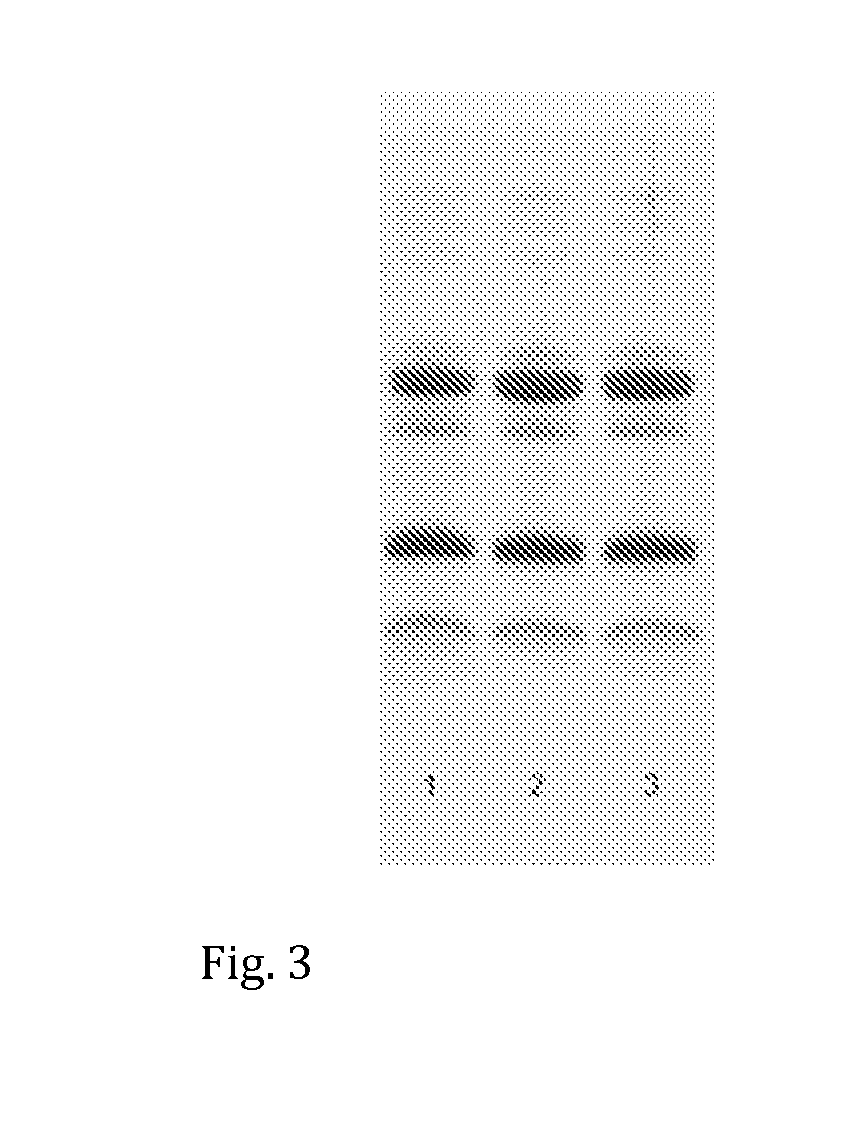Method for producing a milk-based product
a technology of milk-based products and methods, applied in the field of milk-based products production methods, can solve the problems of plasmin generally impairing the organoleptic properties of milk products, prolonged heat treatment has an adverse effect on the organoleptic properties of milk, and treatment does not necessarily inactivate enzymes, etc., to achieve flawless organoleptic properties, prolong shelf life, and reduce the effect of plasmin enzyme activity of milk
- Summary
- Abstract
- Description
- Claims
- Application Information
AI Technical Summary
Benefits of technology
Problems solved by technology
Method used
Image
Examples
example 1
Separation of Milk by Membrane Filtrations
[0064]Skim milk was ultrafiltrated by a volumetric concentration factor (VCR) of 3.7 at about 10° C. The membrane used in the ultrafiltration was Koch HKF 131 from Koch Membrane Systems, Inc. Table 1 shows the compositions of skim milk and of the obtained milk protein concentrate, that is the ultrafiltration retentate.
[0065]Skim milk was microfiltrated at a temperature range from 10° C. to 15° C. at a pressure of less than 1.5 bar to concentrate casein in the microfiltration retentate. The membrane used in the microfiltration was Synder FR from Synder Filtration, Inc. The skim milk was first microfiltrated by a concentration factor of about 4. The microfiltration was then continued by means of diafiltration, in which tap water was added to the obtained microfiltration retentate in an amount equal to that of the obtained retentate. The microfiltration was continued until an equivalent amount of the obtained permeate, compared to the amount of...
reference example 2
Heat Treatments of Milk Products With a Native Casein / Total Protein Ratio of 0.80
[0069]Raw milk was pasteurized at 72° C. for 15 sec. After pasteurization, the raw milk was separated into cream and skim milk. The skim milk was heat-treated by direct steam infusion (UHT steam infusion plant from SPX, Denmark). Temperatures and time periods used in various heat treatments are illustrated in Table 2.
TABLE 2Temperature (° C.)Time period (sec)A1350.5B1570.1C1504
[0070]Inactivation of the plasmin enzyme in milk products treated with various heat treatments was studied. The milk products were packaged aseptically and stored at a cold temperature (<6° C.) and at a room temperature (about 21° C.). The basic components (protein, fat, lactose), furosine, plasmin, native (non-denaturated) whey protein, SDS page, and tyrosine equivalent prior to and after the above heat treatments were determined. The results are given in Table 3.
TABLE 3Raw milk (noPasteurized skimheat treatment)milkABCTotal prot...
example 3
Milk Products of the Invention
[0076]Milk products with an altered casein / total protein ratio were prepared by a method of the invention. The membrane filtration fractions obtained in Example 1 were used in the preparation. The recipes and composition of the milk products are illustrated in Table 4. Composition of the milk-based product of the invention is calculated based on the composition of the milk fractions.
TABLE 4MilkWheyMilk-basedSkimproteinproteinproduct ofmilkCreamconcentrateconcentrateWaterthe inventionProportion (%)23.52.631.039.53.4100Fat (%)380.2—1.0Total protein (%)3.52.012.08.9—8.1NPN (%)0.20.20.20.2—0.2Whey protein (%)0.50.31.96.9—3.6Casein (%)2.81.59.81.7—4.3Casein / total0.800.800.810.19—0.54proteinLactose (%)4.62.84.22.7—3.5Ash (%)0.80.51.60.5—0.88
[0077]The components were combined and thoroughly mixed. 0.12% (w / w) of a lactase enzyme (Maxilact LGX5000 from DSM) was added to the mixture. The mixture was allowed to be hydrolyzed for 20 hours at 5° C. The hydrolyzed m...
PUM
 Login to View More
Login to View More Abstract
Description
Claims
Application Information
 Login to View More
Login to View More - R&D
- Intellectual Property
- Life Sciences
- Materials
- Tech Scout
- Unparalleled Data Quality
- Higher Quality Content
- 60% Fewer Hallucinations
Browse by: Latest US Patents, China's latest patents, Technical Efficacy Thesaurus, Application Domain, Technology Topic, Popular Technical Reports.
© 2025 PatSnap. All rights reserved.Legal|Privacy policy|Modern Slavery Act Transparency Statement|Sitemap|About US| Contact US: help@patsnap.com



